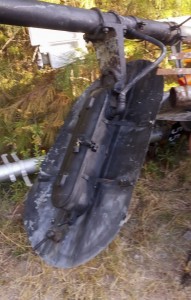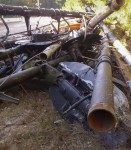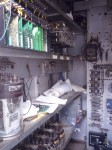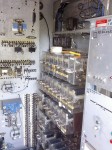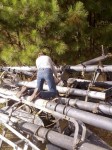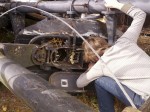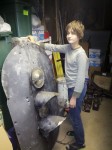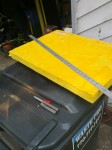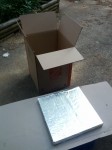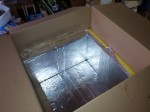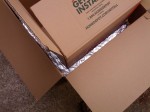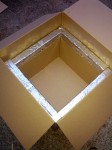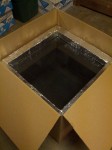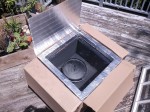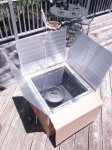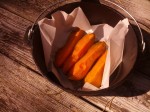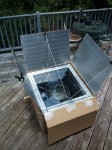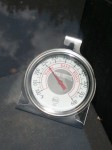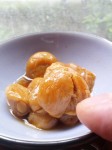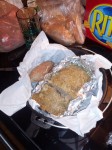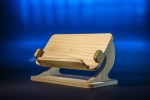 For the past few weeks a pile has been growing near a railroad crossing I pass each day. The pile was made up of the large poles and signal lights used for signaling trains, as well as several small switching shacks where they would house the railway electronics. My son has asked if we could go grab some of the stuff out there. While secretly wishing I could pilfer the pile too, yet trying to be a good dad, I explained that you can’t just go in and take someone else’s stuff, even if it is sitting on the side of the road.
For the past few weeks a pile has been growing near a railroad crossing I pass each day. The pile was made up of the large poles and signal lights used for signaling trains, as well as several small switching shacks where they would house the railway electronics. My son has asked if we could go grab some of the stuff out there. While secretly wishing I could pilfer the pile too, yet trying to be a good dad, I explained that you can’t just go in and take someone else’s stuff, even if it is sitting on the side of the road.
Last week, I saw a CSX truck sitting there. Having nothing to loose, I pulled over and talked to the guy. I told him of my conversation with my son, and asked how we might get a hold of a signal like this. He said “Come get it”. He went on to explain that this stuff was being collected for scrap and it was about to be hauled off. A side step for a second… I do get it, they just need the stuff removed, they have a job to do, but for me, there is so much cool history here, and this is stuff that would not have a hard time finding a home. Seems like a waste. He gave me his card and told us to call him in case anyone gave us a hard time. That was very cool, and something he did not have to do. I thanked him probably more times than I needed to, but this was going to be fun. I got home that night and told my son what we would be doing the following day. He freaked.
I loaded up a bag full of all the tools I thought we might need and we headed out to the tracks. The pile was a scary unruly bunch of metal. It looked like they had just dumped the stuff off the back of the truck. There was no order to it, so we needed to be quite cautious. Most of the signals were face down and under a lot of weight (more than I wanted to deal with). There was one that was suspended from a pole which was within reach. The pole was also not moving anywhere, so it was a good match. It was a puzzle as to how I was going to get the signal off the pole. The top was easy as it had cracked off during the move, but the bottom was well attached. The attached area looks to be made out of cast iron. It was covered in rust, years of elements, and layers and layers of paint. I hit the area lightly with a hammer. The paint cracked and fell off fairly easily. I then hit the whole area with a healthy spray of WD-40. I let this sit for a while. I came back to with a wrench which I tried to fit it on the bolt. My wrench (which I though would be big enough) was far too small. The whole thing was confifured around this massive bolt, so it needed to come out. I did not have the time to run and buy a wrench, nor did I want to put out a bunch of money for rare use situations.
 I left it alone for a while and started to look at the rest of the items that were there. My son was having a blast looking at stuff. He found a whole set of wiring schematics for the whole area. There were copies of schematics from as early as 1974 in there. It looks like every time they made a change, they added newer and newer pages. I then started looking at some of the devices in the little switching buildings. There were banks and banks of massive relay units. These rooms were completely detached from the world, but it was still a little unnerving. There were metal contacts everywhere. One whole wall was filled with bus bars and connections that were totally uncovered. It seemed somewhat dangerous. I have now learned, and was somewhat surprised to find out that while yes, you could theoretically get a poke from these devices (if it were powered), this stuff is actually low voltage driven. I guess that the thick wires used everywhere was used to keep resistances lower. While I regret not loading up my car, I did not want to be a hog and take more than my share. So, I left with only a few of the devices. Knowing now that they took the buildings away and dumped the contents makes me a bit sad. People just do not make things like this any longer. The relay units are built out of rugged thick glass and heavy spools of copper. It is all held together with massive screws and nuts. It was designed for many lifetimes of use.
I left it alone for a while and started to look at the rest of the items that were there. My son was having a blast looking at stuff. He found a whole set of wiring schematics for the whole area. There were copies of schematics from as early as 1974 in there. It looks like every time they made a change, they added newer and newer pages. I then started looking at some of the devices in the little switching buildings. There were banks and banks of massive relay units. These rooms were completely detached from the world, but it was still a little unnerving. There were metal contacts everywhere. One whole wall was filled with bus bars and connections that were totally uncovered. It seemed somewhat dangerous. I have now learned, and was somewhat surprised to find out that while yes, you could theoretically get a poke from these devices (if it were powered), this stuff is actually low voltage driven. I guess that the thick wires used everywhere was used to keep resistances lower. While I regret not loading up my car, I did not want to be a hog and take more than my share. So, I left with only a few of the devices. Knowing now that they took the buildings away and dumped the contents makes me a bit sad. People just do not make things like this any longer. The relay units are built out of rugged thick glass and heavy spools of copper. It is all held together with massive screws and nuts. It was designed for many lifetimes of use.
I went back to my main target. The signal. The WD-40 had had time to soak in. I decided that I would try to break the nuts free with my hammer. I started hitting the nut with a fairly severe angle. I wanted to glance off the thing, not bash it to a pulp. After a few hits, it started to move. I kept at it. Once it had turned a full rotation, I tried to twist it by hand (gloved hand to be clear). It was hard going but it turned. I got the second nut started the same way. I kept moving them along by hand until they would freeze up at which point I would remind them about the hammer. eventually both nuts were off. I went around to the front and gave the bolt a good whack. I watched the whole thing shift a little. Looking at the bolt closer, it was clearly disconnected, so I tried to give the signal a pull. It came willingly. It was at that moment that I learned exactly how heavy the thing was.
 While yes, I had slayed the beast. But getting it into the car was another whole issue. When you see these signs up on their posts where they belong, they do not look to be very large. But they are very large. This thing is roughly 4 feet tall. I believe, given it’s weight, that the whole light housing to be made out of cast iron. It was too heavy for my son to help with so I sort of deadmanned it into the back end of the Prius. This is a sad point as I had to set it down at one point and it scratched the bleep out of the back of my car. Not the sort of thing you can hit undo and fix. We got everything home and when I pulled out the signal, it was at this point that I realized that the top shroud was missing.
While yes, I had slayed the beast. But getting it into the car was another whole issue. When you see these signs up on their posts where they belong, they do not look to be very large. But they are very large. This thing is roughly 4 feet tall. I believe, given it’s weight, that the whole light housing to be made out of cast iron. It was too heavy for my son to help with so I sort of deadmanned it into the back end of the Prius. This is a sad point as I had to set it down at one point and it scratched the bleep out of the back of my car. Not the sort of thing you can hit undo and fix. We got everything home and when I pulled out the signal, it was at this point that I realized that the top shroud was missing.
I went back the following morning to find that all the little buildings were gone. There was a Cat bulldozer there scooping up signal poles and everything else up onto a trailer to be hauled away. I found the guy in charge and tried to explain that I left my shroud. It was very loud and difficult to hear. He replied… “You want a signal? Well you can’t have them all because we want one too.” I tried again to explain what I was after pointing to the ground where the bulldozer was rolling over some rather flat versions of shrouds. He said again… “If yer wantin’ a signal, you gotta get it now because he’s almost done”. About midway through trying again to explain what I was after, it dawned on me that wait a minute… he said I could take another signal. The Cat driver had liberated a few more signals by removing several of the poles that were on top of them. I shook my head yes, I wanted one. I told the cat guy to put one over to the side. I had left the WD-40 at home, but the hammer was still in the car. I worked as fast as I could to get the nuts off. I struggled with the thing over to my car. The man must have put together what I was originally asking for as he later handed me a stack of shrouds.
 Feeling quite good, I was about to leave. The bulldozer pulled on a pole on which were 2 single light signals. They split and fell to the ground. As he was putting the pole on the trailer, I asked if I could grab the lights. They said yes. I grabbed them and took them back to the car. It struck me again how heavy this stuff was. These were not large pieces. Probably smaller than a soccer ball. But they were amazingly heavy. One was pretty rusted and in fairly bad shape. The other still held it’s lens and while dirty, seemed to be okay. I am glad I asked when I did. It was a great find and a heck of a lot of fun exploring.
Feeling quite good, I was about to leave. The bulldozer pulled on a pole on which were 2 single light signals. They split and fell to the ground. As he was putting the pole on the trailer, I asked if I could grab the lights. They said yes. I grabbed them and took them back to the car. It struck me again how heavy this stuff was. These were not large pieces. Probably smaller than a soccer ball. But they were amazingly heavy. One was pretty rusted and in fairly bad shape. The other still held it’s lens and while dirty, seemed to be okay. I am glad I asked when I did. It was a great find and a heck of a lot of fun exploring.

